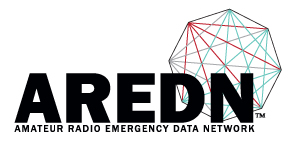There are NO alerts at this time.
Alerts
News
Hamvention® 2018 Theme Promotes Community Service
As reported by the ARRL, the theme for Hamvention® 2018 is “Amateur Radio...Serving the Community.” Ron Cramer, KD8ENJ, Hamvention General Chairman, said the theme acknowledges the role that ham radio operators play in their communities, especially in times of emergencies.
“During recent disasters, hurricanes in Florida, Texas and Puerto Rico and wildfires in the West, Amateur Radio operators were once again called upon to provide emergency communication assistance when regular services failed or were overtaxed,” Cramer said.
He said that in keeping with the theme, Hamvention is planning to have forums on emergency communication and displays of Amateur Radio emergency communication vehicles. Disasters are not the only times that Amateur Radio operators contribute to their communities.
For more information see the Hamvention website and the ARRL website.
Look for the AREDN team and the Miami Valley Mesh Alliance when you are there. We look forward to meeting you.
AREDN Group in South Africa Responds to Fire Disaster
A group of amateur radio operators in South Africa known as the the Mossel Bay Mesh Network responded to a call for emergency communications assistance in the recent fire disaster in the Western Cape area.
After the fires began on 7 June, a call went out for amateur radio assistance on 8 June when cell phone, landline and Internet services were lost.Hams responding to the call include: ZS2I, ZS1Q, ZS1ZS, ZS1HB, ZR1AOC and ZS1I. These radio amateurs worked around the clock to assist their local communities. Johan Terblanche, ZS1I, an administrator of the AREDN Mossel Bay Mesh Network reports that disaster communication links remained active until normal telecommunication service was restored on June 11, while the local hams remain on high alert.
It has been reported that the widespread fire caused a number of fatalities, destroyed over 430 structures and displaced thousands of people. The disaster relief efforts are continuing.
The Mossel Bay Mesh Network has posted videos and still photographs of the fire on their web site.
Reported by Southgate Amateur Radio News and the...
QST Magazine Article - AREDN A High-Speed Data Network
Andre Hansen, K6AH wrote an article, published in the June 2017 edition of QST, offering a thorough discussion of a high-speed multimedia network for public service applications..
We present the full article here, which was reprinted with permission from the June 2017 issue of QST, a publication of the ARRL, the national association for Amateur Radio®
Announcing the Availability of Release Candidate #1 of Our Upcoming v3.17.1.0
AREDN encourages users to load (http://www.arednmesh.org/content/software click Release Candidates) and test version 3.17.1.0RC1 and report any issues to the Forum.
Release Notes 3.17.1.RC1
These notes accompany our 3.17.1.0 Release Candidate-1 and describe changes since our last major production release, v3.16.1.0.
New Device Support
Added support for additional Ubiquiti devices which are now flagged as “In testing”:
- AirGrid M5 (XW)
- NanoBeam M5-16 (XW)
- NanoBeam M5-19 (XW)
- NanoStation Loco M5 (XW)
- NanoStation M5 (XW) (in 3.16.1.0)
- Rocket M5 (XW)
- Rocket M5 (with GPS)
- PowerBeam M2-400
- PowerBeam M5-300
- PowerBeam M5-400
-
Added support for newer TP-Link device revisions:
-
CPE210 v1.1
-
Security Fixes
- SCS-2017-001 – High Severity
- A remote Denial of Service flaw impacting ALL RELEASES of the AREDN/BBHN branded firmware since at least version 0.4.3. Immediate upgrade to 3.16.1.1 (or newer) is recommended to ensure stability of the mesh nodes....
Pages
Announcements
Standardized NanoStation XM Ethernet port configuration
The NanoStation XM devices now have fully functional ports - both main and secondary. This capability will be in Dec 3, 2018 nightly build. The behavior is now same as NanoStation XW devices. POE Passthough is also functional.
This new capability means the following usage is significantly simplified to setup. At local community events when setting up ipCams around a parade route or event area, there can be a station with 2 nodes -- incoming link on one channel/band and outgoing link on another channel/band. This means many HD video quality signals can go through the station as this relay station does not share the same frequency.
Before:
2 mesh nodes, 1 ipCam, 1 5-port switch, 4 way power split to all devices, junction box. Lots of labor and points of failure to build and configure the enclosure and cabling.
After:
2 mesh nodes, 1 ipCam, daisy chain the cat5 cables though these devices, no enclosure.
Issues to consider when deploying:
1) I've seen a NSM2 XM device...
AREDN Documentation Repository
Thanks to a great suggestion and some content from Steve KC0EUW, we now have an AREDN document repository on GitHub.
If you just want to read what is in the library, you can view the docs on ReadTheDocs.io at https://arednmesh.readthedocs.io/en/latest.
You can also find this documentation by clicking on the Docs menu item on the front page and making your choice from the dropdown list.
We added a new Network Design Guide to help you in planning your local AREDN mesh network.
If you are interested in contributing to the rapidly growing set of AREDN related information, you can easily do so on GitHub. This works the same way as if you were contributing code to the project.
There are detailed instructions on how you can contribute to AREDN documentation in the README.md file
Summary Instructions:
After...
- ‹ previous
- 13 of 35
- next ›
Theme by Danetsoft and Danang Probo Sayekti inspired by Maksimer













